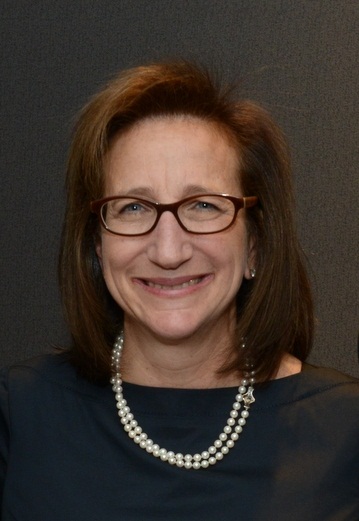Wednesday, November 26, 2014
 by Julie Sandorf, President, Charles H. Revson Foundation
by Julie Sandorf, President, Charles H. Revson FoundationIn 1901, Andrew Carnegie committed an audacious act of philanthropy, setting in motion the modern incarnation of New York City’s neighborhood libraries. Carnegie agreed to provide the majority of funds to build over 100 branches across all five boroughs. The Carnegie Corporation and the City of New York signed the ‘Carnegie Compact’, which required the City to keep the branches open six days a week-- from at least nine in the morning until nine at night-- and to keep the branches in good physical condition.
As reported in the Center for an Urban Future’s Branches of Opportunity, which describes the crucial role that New York’s 207 branch libraries are playing today, these institutions attract over 40.5 million visitors annually—more than all the city’s professional sports teams and major cultural institutions combined. At a time when far too many New Yorkers lack the basic language, literacy, and technological skills needed to obtain decent jobs, the city’s branch libraries have become the most accessible part of the City’s human capital system, the go-to place for upgrading their skills and a key platform for economic empowerment.
Libraries are the city’s single most important resource for lifelong and non-institutional learning—whether it is English-language workshops for immigrants, after-school enrichment for kids, or job search assistance. They are also the single biggest contributor to closing the digital divide for over 3 million New Yorkers without high-speed internet service. Indispensible community hubs, the branch libraries continue to fulfill the original promise of the Carnegie commitment.
But the Carnegie Compact itself is in tatters. NYC’s branch libraries are open on average 43 hours a week, far short of the six day/72-hour week promised by the Compact. And the City’s per capita spending on library services is woeful—less than 50% of San Francisco’s per capita expenditure and significantly less than that of many other major U.S. cities.
Meanwhile, a decades-long disinvestment in capital funding for the branch libraries has left a legacy of over $1.1 billion in basic capital needs. As detailed in CUF’s most recent report, Re-Envisioning New York’s Branch Libraries, the average branch library is 61 years old, with a quarter of the branches built over a century ago. Fifty-nine branches need $5 million or more in basic repairs. The CUF study found that the vast majority of libraries are poorly configured to meet the demands of the digital age—with too few electrical outlets, too little space for classes, group work, and space for individuals working on laptop computers. Of the forty-five branches that CUF researchers visited, 58% had outlets for 10 devices or fewer, and 18% had plugs for just one or none at all.
The report also shows that city capital funding levels for libraries have been woefully insufficient to cover basic building needs. Between fiscal years 2004-2013, the city spent $503 million on capital improvements for the libraries. During this same time period, city capital expenditures for cultural institutions totaled $2.1 billion, and capital funding for parks and recreational facilities totaled $4.4 billion. Not surprisingly, we have fallen vastly behind other major cities. Seattle, Los Angeles, San Francisco, Chicago, and Columbus have invested in and executed ambitious branch library modernization plans, resulting in the rebuilding and renovation of upwards of 100% of their branches.
We also know that New Yorkers love their neighborhood libraries. In 2013, the Revson Foundation, in partnership with WNYC’s Brian Lehrer Show, inaugurated the NYC Neighborhood Library Awards. We asked New Yorkers to nominate their favorite libraries and to tell us why their library matters to their communities. In fewer than six weeks, we received over 4,300 nominations. Click here to read some of the most compelling stories.
This year, we joined forces with the Stavros Niarchos Foundation and WNYC to launch the Second Annual Awards. In just two weeks, we’ve received over 3,000 nominations. Click here to nominate your favorite library. Doubling last year’s award, the five winning library branches will each receive $20,000.
There is no doubt that NYC’s branch libraries are working against all odds to fulfill Carnegie’s vision—and then some. And there is no doubt that the branch libraries are a vital resource, serving the largest and most diverse cross-section of people in the city.
It is time to restore the Carnegie Compact. And it is time for the City of New York to live up to the commitment it made when signing that compact. Libraries must build a strong community constituency that will advocate for increased capital and operating funds. Front-line community librarians need professional development, coaching, and support to cultivate and activate cadres of ‘community advocates’ among their patrons. The libraries must build the capacity to reach out and establish deep relationships with local elected representatives and community institutions, including local schools, who share their mission and values and who are likely allies in a quest to improve the health and welfare of the community. Philanthropy can play a catalytic role in supporting these efforts.
As the de Blasio Administration prepares its Ten-Year Capital Plan, it is seeking to develop affordable housing within the context of healthy communities. Our branch libraries should feature as a central focus of these ambitious plans. They are more essential than ever.
